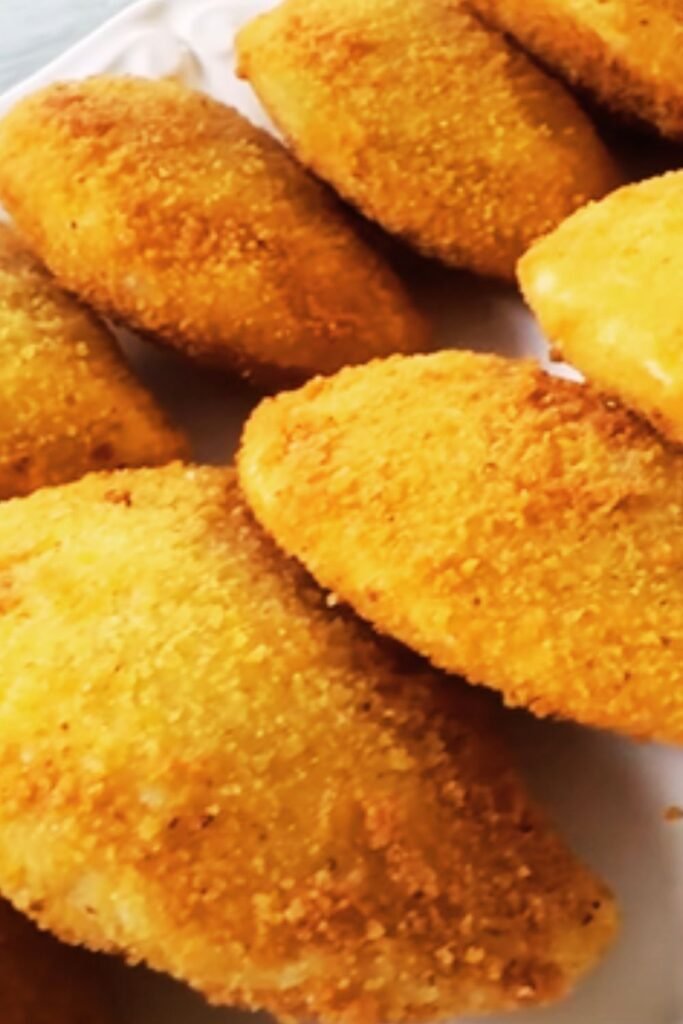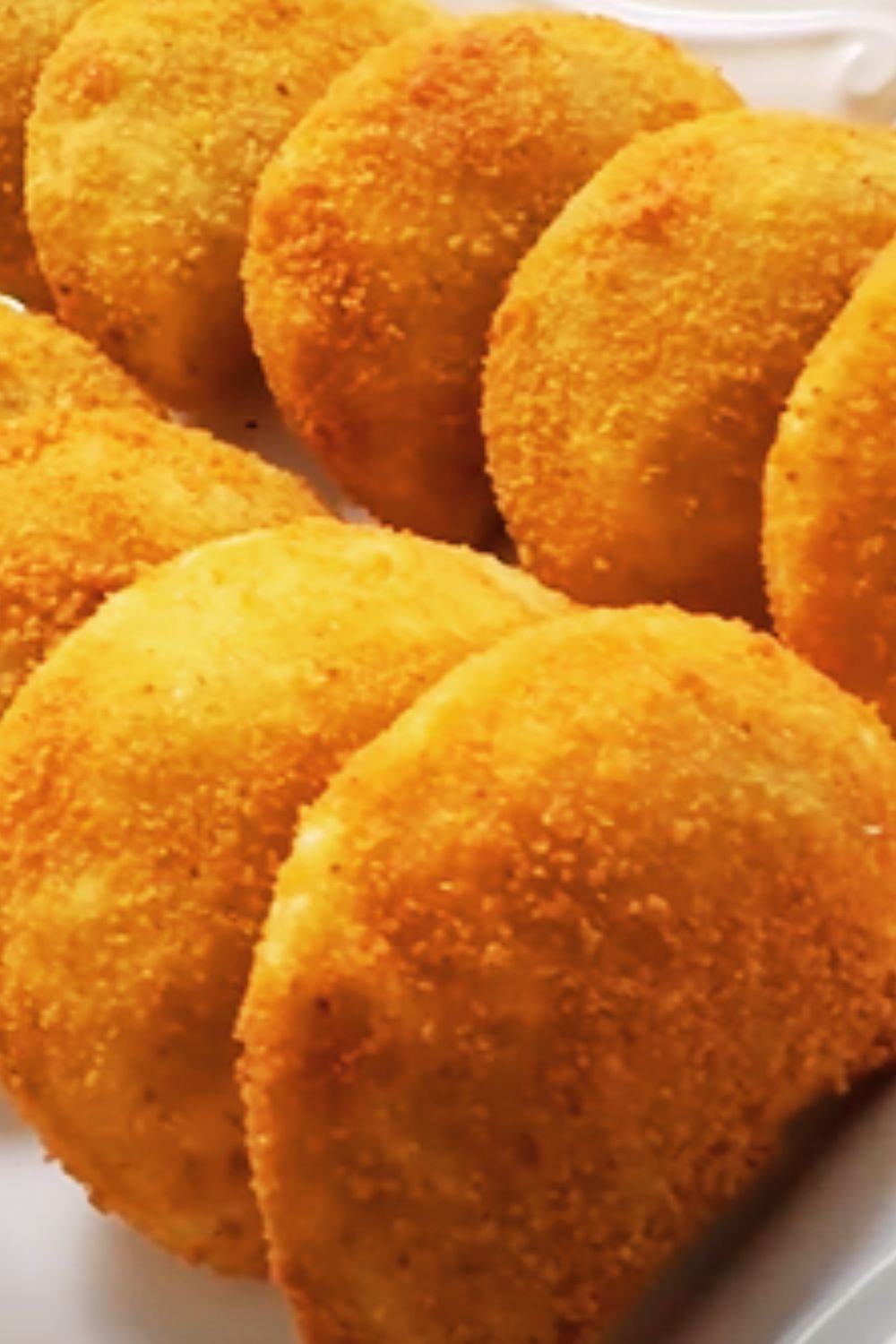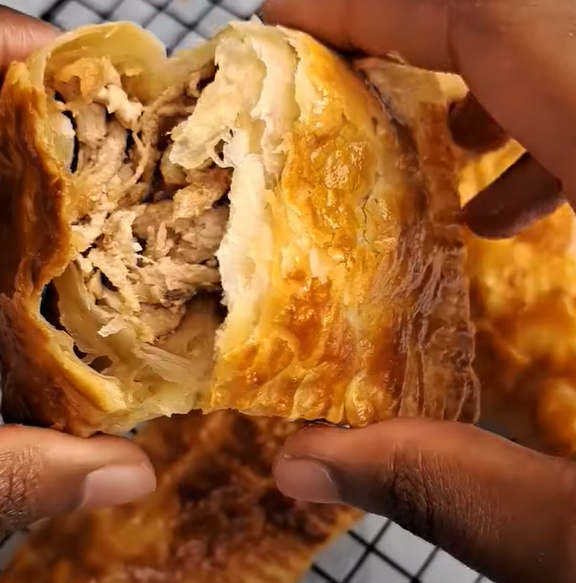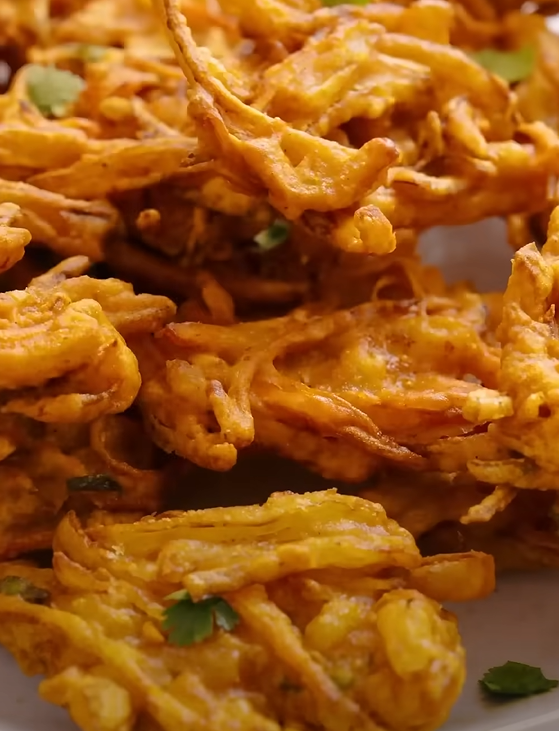When I first encountered rissóis de camarão in a tiny Portuguese bakery in Lisbon, my world changed. These golden, crispy turnovers filled with creamy shrimp beckoned from behind the glass display case, and one bite transported me to culinary heaven. The combination of delicate pastry and rich, flavorful filling creates an experience that defines Portuguese comfort food at its finest.
Rissóis de camarão represent more than just a snack—they embody centuries of Portuguese culinary tradition. These beloved turnovers grace tables during festive occasions, family gatherings, and everyday meals alike. My journey with this recipe began when my Portuguese neighbor, Maria, shared her grandmother’s secret techniques, passed down through four generations.
Understanding Rissóis de Camarão: A Culinary Definition
Rissóis de Camarão : Traditional Portuguese turnovers featuring a delicate pastry shell filled with creamy shrimp mixture, typically shaped like half-moons and deep-fried until golden
Massa de Rissóis : The specialized dough used for rissóis, made with flour, butter, water, and sometimes milk, creating a tender yet sturdy wrapper
Recheio : The filling or stuffing, in this case referring to the rich shrimp mixture bound with béchamel sauce
Empanamento : The traditional coating process using flour, beaten eggs, and breadcrumbs before frying
The beauty of rissóis lies in their perfect balance of textures and flavors. Each bite delivers a satisfying crunch from the golden exterior, followed by the smooth, creamy interior bursting with oceanic sweetness from fresh shrimp.
The History Behind This Portuguese Treasure
My fascination with rissóis deepened when I learned about their origins. These turnovers trace their roots to medieval Portugal, evolving from ancient empanada traditions brought by various cultural influences. Portuguese sailors and traders adapted the concept, incorporating local ingredients and techniques to create something uniquely their own.
The coastal regions of Portugal, blessed with abundant seafood, naturally gravitated toward shrimp as the preferred filling. Families along the Atlantic coast developed their own variations, with each generation adding subtle refinements to the recipe. Today, rissóis de camarão remain a cornerstone of Portuguese cuisine, appearing in everything from casual cafés to elegant restaurants.
Essential Ingredients for Perfect Rissóis
Creating authentic rissóis de camarão requires careful attention to ingredient quality. Through my years of perfecting this recipe, I’ve learned that each component plays a crucial role in achieving the ideal result.
For the Pastry Dough
| Ingredient | Quantity | Purpose | Quality Notes |
|---|---|---|---|
| All-purpose flour | 500g | Structure base | Use high-quality flour for best texture |
| Unsalted butter | 100g | Richness and tenderness | European-style butter preferred |
| Water | 300ml | Hydration | Use filtered water for pure flavor |
| Whole milk | 100ml | Richness | Full-fat milk essential |
| Salt | 1 tsp | Flavor enhancement | Fine sea salt recommended |
| Bay leaves | 2 leaves | Aromatic complexity | Fresh preferred over dried |
For the Shrimp Filling
| Ingredient | Quantity | Purpose | Selection Tips |
|---|---|---|---|
| Fresh shrimp | 600g | Main protein | Medium-large size, peeled and deveined |
| Unsalted butter | 60g | Sauce base | High-quality butter essential |
| All-purpose flour | 40g | Thickening agent | Sift for smooth texture |
| Whole milk | 400ml | Sauce liquid | Room temperature preferred |
| Onion | 1 medium | Flavor foundation | Yellow onion, finely diced |
| Garlic | 3 cloves | Aromatic depth | Fresh cloves, minced |
| Fresh parsley | 3 tbsp | Herbaceous note | Flat-leaf variety preferred |
| White wine | 50ml | Flavor enhancement | Dry Portuguese wine ideal |
| Salt | To taste | Seasoning | Adjust gradually |
| White pepper | 1/4 tsp | Spice | Freshly ground preferred |
| Nutmeg | Pinch | Warmth | Freshly grated essential |
For Assembly and Frying
| Ingredient | Quantity | Purpose | Notes |
|---|---|---|---|
| Large eggs | 3 eggs | Binding coating | Room temperature |
| Fine breadcrumbs | 200g | Crispy exterior | Fresh breadcrumbs preferred |
| All-purpose flour | 100g | First coating layer | For dusting |
| Vegetable oil | For deep frying | Cooking medium | Neutral flavor oil |

Step-by-Step Preparation Method
Preparing the Pastry Dough
My approach to creating the perfect pastry dough has evolved through countless batches. The key lies in achieving the right consistency—pliable enough to work with, yet strong enough to hold the filling without breaking.
I begin by combining water, milk, butter, salt, and bay leaves in a medium saucepan. This mixture needs gentle heating until the butter completely melts and the liquid reaches a rolling boil. The bay leaves infuse subtle aromatic notes that distinguish homemade rissóis from commercial versions.
Once boiling, I remove the bay leaves and reduce the heat to low. Adding the flour all at once requires quick, vigorous stirring to prevent lumps. This technique, borrowed from choux pastry making, creates a smooth, cohesive dough that pulls away from the pan sides when properly cooked.
The dough requires cooling to room temperature before use. I transfer it to a bowl, cover with plastic wrap pressed directly onto the surface to prevent skin formation, and let it rest for at least 30 minutes.
Creating the Shrimp Filling
The filling represents the soul of rissóis de camarão. My technique focuses on building layers of flavor while maintaining the delicate shrimp texture.
I start by sautéing finely diced onion in butter until translucent and fragrant. Adding minced garlic requires careful timing—just 30 seconds to release its aroma without burning. The shrimp go in next, cooking briefly until they turn pink and opaque. Overcooking at this stage ruins the final texture.
White wine deglazes the pan, adding brightness and depth. I let it reduce by half before removing the shrimp mixture to a plate, preserving their tender texture while I prepare the béchamel base.
The béchamel sauce requires patience and constant attention. I melt butter in the same pan, whisk in flour to create a roux, and cook until the raw flour taste disappears. Gradually adding warm milk while whisking prevents lumps from forming. The sauce should coat the back of a spoon when properly thickened.
Returning the shrimp mixture to the béchamel, I fold everything together gently. Fresh parsley, salt, white pepper, and a hint of nutmeg complete the seasoning. The filling must cool completely before assembly—I often prepare it a day ahead for convenience.
Assembly Techniques for Professional Results
Shaping the Rissóis
Working with small portions of dough ensures consistent results. I divide the pastry into golf ball-sized portions, rolling each into a thin circle about 4 inches in diameter. The thickness should be uniform—too thick and the pastry overwhelms the filling; too thin and it tears during handling.
Placing a heaping tablespoon of cooled filling in the center, I brush the edges with water for better adhesion. Folding the dough over creates the characteristic half-moon shape. The sealing process requires firm pressure along the edges, using a fork to create decorative crimping while ensuring a secure seal.
Each shaped rissol goes onto a parchment-lined tray, covered with a damp towel to prevent drying. They can be refrigerated for up to 24 hours before the final coating and frying steps.
The Coating Process
The triple coating—flour, egg, breadcrumbs—creates the signature golden exterior. I set up three shallow dishes in assembly-line fashion for efficiency.
First, each rissol gets a light dusting of flour, shaking off excess. The beaten eggs come next, ensuring complete coverage. Finally, fresh breadcrumbs provide the crispy coating that makes rissóis irresistible.
Working systematically prevents mess and ensures consistent coating. I recommend preparing all rissóis through this stage before beginning the frying process.
Frying to Golden Perfection
Temperature Control
Oil temperature makes or breaks fried foods. I maintain 350°F (175°C) throughout the frying process, using a thermometer for accuracy. Too hot and the exterior burns before the interior heats through; too cool and the rissóis absorb excess oil, becoming greasy.
Frying Technique
Working in small batches prevents overcrowding and temperature drops. Each rissol needs space to fry evenly, turning golden brown in about 3-4 minutes per side. I use a slotted spoon for gentle turning, avoiding punctures that could release filling.
The visual cues are unmistakable—properly fried rissóis display deep golden color with crispy, bubbling surfaces. They should feel light when lifted, indicating proper moisture evaporation.
Draining on paper towels or a wire rack removes excess oil while maintaining crispiness. Serving immediately ensures the best texture contrast between crispy exterior and creamy interior.
Nutritional Profile and Dietary Considerations
Understanding the nutritional aspects of rissóis de camarão helps with meal planning and dietary considerations. Each turnover provides substantial protein from shrimp while delivering carbohydrates from the pastry coating.
Nutritional Breakdown Per Serving
| Nutrient | Amount per Rissol | Daily Value % |
|---|---|---|
| Calories | 185 | 9% |
| Protein | 12g | 24% |
| Carbohydrates | 18g | 6% |
| Fat | 8g | 12% |
| Saturated Fat | 3g | 15% |
| Cholesterol | 85mg | 28% |
| Sodium | 320mg | 14% |
| Fiber | 1g | 4% |
| Sugar | 2g | – |
Health Benefits
Shrimp provides high-quality protein while remaining relatively low in calories. These crustaceans offer selenium, vitamin B12, and omega-3 fatty acids that support heart and brain health. The moderate portion size makes rissóis suitable for balanced eating when enjoyed as part of varied meals.
Serving Suggestions and Pairing Ideas
My experience serving rissóis has taught me that presentation and accompaniments significantly enhance the dining experience. These versatile turnovers adapt to various occasions and serving styles.
Traditional Portuguese Service
Authentic Portuguese service often includes rissóis as part of a larger spread. I like arranging them on platters alongside other Portuguese appetizers like pastéis de nata, chouriço, and fresh cheeses. Small bowls of olives and cornichons provide briny contrasts to the rich turnovers.
Modern Presentation Ideas
Contemporary plating allows creativity while respecting tradition. Individual serving plates with 2-3 rissóis, garnished with fresh parsley and lemon wedges, create elegant presentations. A small side salad of mixed greens with light vinaigrette balances the richness.
Beverage Pairings
Non-alcoholic options complement rissóis beautifully. Sparkling water with lemon cleanses the palate between bites. Portuguese fruit sodas like Sumol provide traditional authenticity. Fresh lemonade or iced tea offer refreshing contrasts to the rich filling.
For special occasions, consider serving sparkling grape juice or sophisticated mocktails that echo Portuguese flavors without alcohol.
Variations and Creative Adaptations
Regional Portuguese Variations
Different Portuguese regions have developed their own rissól interpretations. Northern regions sometimes include hard-boiled eggs in the filling, while coastal areas might add other seafood varieties. Some families incorporate fresh herbs like dill or cilantro for unique flavor profiles.
Modern Dietary Adaptations
Contemporary dietary needs have inspired creative adaptations. Gluten-free versions using alternative flour blends accommodate celiac requirements. Dairy-free béchamel made with plant-based milk serves lactose-intolerant guests. Air fryer preparation reduces oil content while maintaining crispy textures.
International Fusion Ideas
My experiments with fusion flavors have yielded interesting results. Adding curry powder creates Indo-Portuguese influences reminiscent of Goan cuisine. Incorporating jalapeños appeals to those preferring heat. Asian-inspired versions with ginger and soy sauce offer unexpected but delicious combinations.
Storage and Reheating Guidelines
Proper Storage Methods
Freshly made rissóis taste best immediately, but proper storage extends their enjoyment. Completely cooled turnovers store in refrigerator containers for up to three days. Layering with parchment paper prevents sticking and maintains shapes.
For longer storage, freezing works excellently. I arrange uncooked, shaped rissóis on baking sheets until solid, then transfer to freezer bags. They keep for up to three months, frying directly from frozen with adjusted cooking times.
Reheating Techniques
Oven reheating preserves crispiness better than microwaving. I preheat to 350°F (175°C) and warm refrigerated rissóis for 8-10 minutes until heated through. Frozen ones require 15-20 minutes with occasional turning.
Air fryers excel at reheating, restoring crispiness in just 3-4 minutes at 350°F (175°C). This method rivals fresh-fried quality while using minimal additional oil.
Troubleshooting Common Issues
Dough Problems and Solutions
Tough, chewy pastry: Usually results from overmixing or insufficient fat. I ensure butter fully incorporates and avoid excessive kneading.
Cracking during assembly: Indicates dough too dry or cold. Letting it come to room temperature and adding a tablespoon of warm milk usually resolves this.
Soggy bottoms: Often caused by insufficient oil temperature or overcrowding during frying. Maintaining proper temperature and working in small batches prevents this issue.
Filling Challenges
Watery filling: Results from inadequately thickened béchamel or improperly drained shrimp. I cook the sauce until it coats a spoon and pat shrimp completely dry.
Burst rissóis: Usually from overfilling or inadequate sealing. Using moderate filling amounts and ensuring thorough edge sealing prevents bursting.
Bland flavor: Often means insufficient seasoning or poor-quality ingredients. I taste the filling before assembly and adjust seasonings accordingly.
Questions and Answers
Q: Can I prepare rissóis de camarão in advance for parties?
I absolutely recommend advance preparation for entertaining! You can complete the entire process through shaping and coating, then refrigerate for up to 24 hours before frying. This actually improves the texture as the coating adheres better. For even more convenience, freeze the shaped, uncoated rissóis for up to three months, then coat and fry directly from frozen.
Q: What’s the best oil temperature for frying rissóis?
Maintaining 350°F (175°C) consistently gives the best results. I always use a thermometer rather than guessing. Too hot and the outside burns before the inside heats through; too cool and they become greasy. The oil should bubble gently around the rissóis when you add them—if it bubbles violently, it’s too hot.
Q: Can I bake rissóis instead of frying them?
While traditional rissóis are fried, baking offers a healthier alternative. I brush them with beaten egg and bake at 400°F (200°C) for 20-25 minutes until golden. The texture differs—less crispy but still delicious. Air frying at 375°F (190°C) for 12-15 minutes provides a nice compromise between health and crispiness.
Q: What should I do if my pastry dough tears easily?
Tearing usually indicates the dough is too dry or has been overworked. Let it rest at room temperature for 30 minutes if it’s been refrigerated. If still tearing, knead in a tablespoon of warm milk or water very gently. The dough should feel smooth and pliable, not sticky or dry.
Q: How can I tell when the shrimp filling is properly seasoned?
I always taste the cooled filling before assembly. It should be well-seasoned since the pastry is unsalted. The flavor should be bright with the shrimp as the star, supported by herbs and aromatics. Remember that frying will concentrate flavors slightly, so don’t over-season.
Q: Why do my rissóis sometimes burst during frying?
Bursting typically happens from overfilling or inadequate sealing. I use about a tablespoon of filling per rissol and ensure the edges are completely sealed with fork crimping. Also, avoid frying them straight from the refrigerator—let them come to room temperature for 15 minutes first.
Q: Can I substitute other seafood for the shrimp?
Absolutely! Crab, lobster, or a seafood medley work beautifully. I’ve made versions with cod, salmon, and even scallops. Just ensure whatever seafood you use is cooked properly and has good texture. Fish should be flaked, while shellfish should be chopped to appropriate sizes.
Q: How do I prevent the breadcrumb coating from falling off?
The key is proper coating technique and allowing each layer to set. After flouring, let excess fall off. Dip completely in beaten egg, allowing excess to drip. Press breadcrumbs gently but firmly all around. Let coated rissóis rest for 10 minutes before frying—this helps the coating adhere better.
Q: What’s the secret to getting the pastry dough just right?
The secret lies in not overworking it and achieving the right consistency. When cooking the flour mixture, stir vigorously until it pulls away from pan sides and forms a ball. The dough should be smooth, slightly sticky when warm, and pliable when cooled. If it’s too stiff, add a little warm milk; if too soft, cook a bit longer.
Q: How long can I store the shrimp filling before using it?
The filling keeps beautifully in the refrigerator for up to three days, actually improving in flavor as it sits. I often make it a day ahead for better flavor development. Store it covered tightly to prevent surface skin formation. Before using, bring it to room temperature and stir gently to restore smoothness.
Creating perfect rissóis de camarão requires patience, quality ingredients, and attention to detail. Each element—from the tender pastry to the creamy shrimp filling—contributes to the final masterpiece. My years of perfecting this recipe have taught me that success lies in respecting traditional techniques while adapting to modern conveniences and dietary needs.
These golden turnovers represent more than just food; they embody Portuguese hospitality and culinary heritage. Whether serving them at family gatherings, dinner parties, or enjoying them as a special treat, rissóis de camarão never fail to impress and satisfy.
The journey from raw ingredients to golden, crispy turnovers filled with oceanic goodness rewards every moment spent in preparation. Each bite transports you to Portuguese coastal towns where generations of families have perfected this beloved recipe. My hope is that these detailed instructions help you create your own memorable rissóis de camarão experience, sharing this taste of Portugal with those you love.


